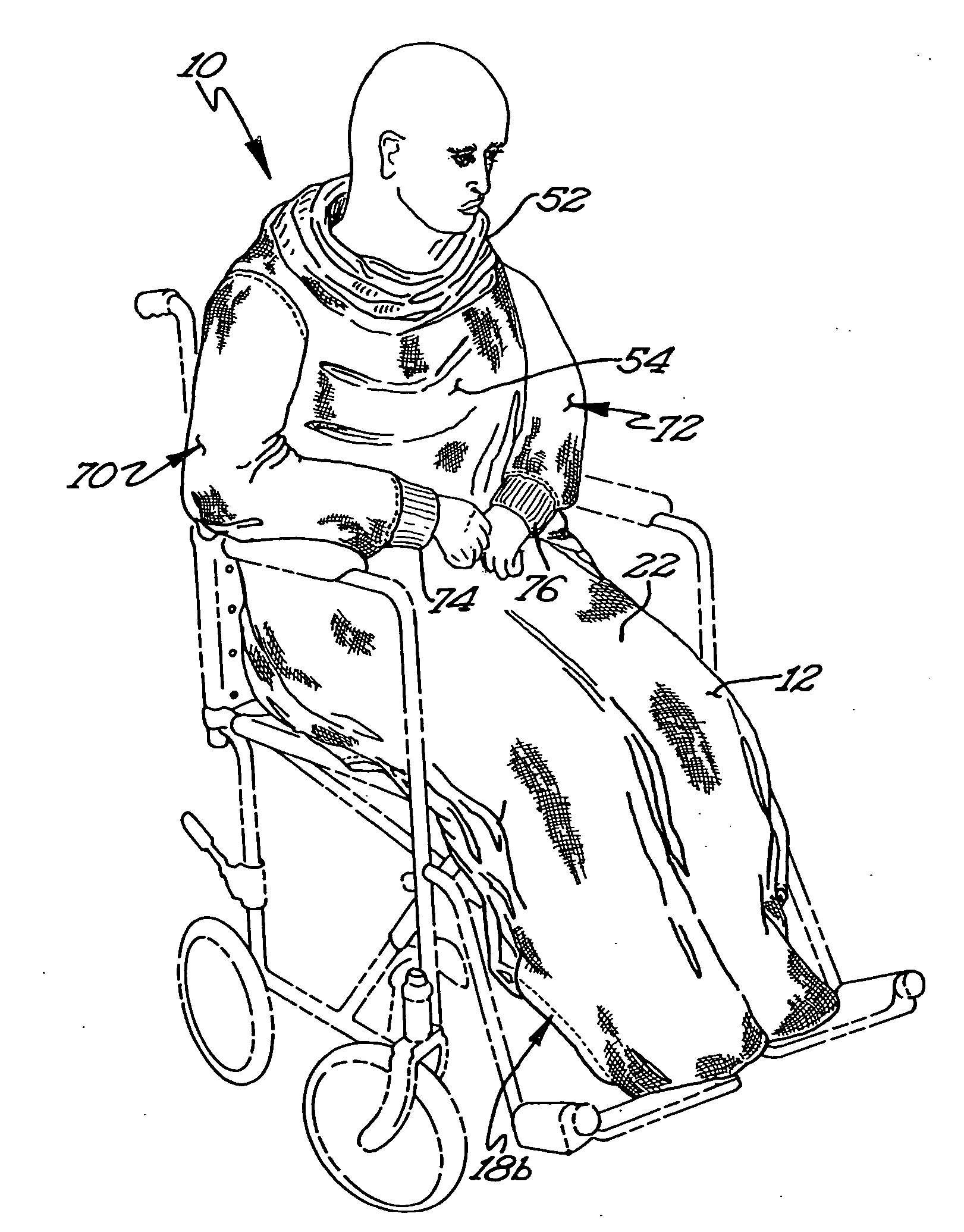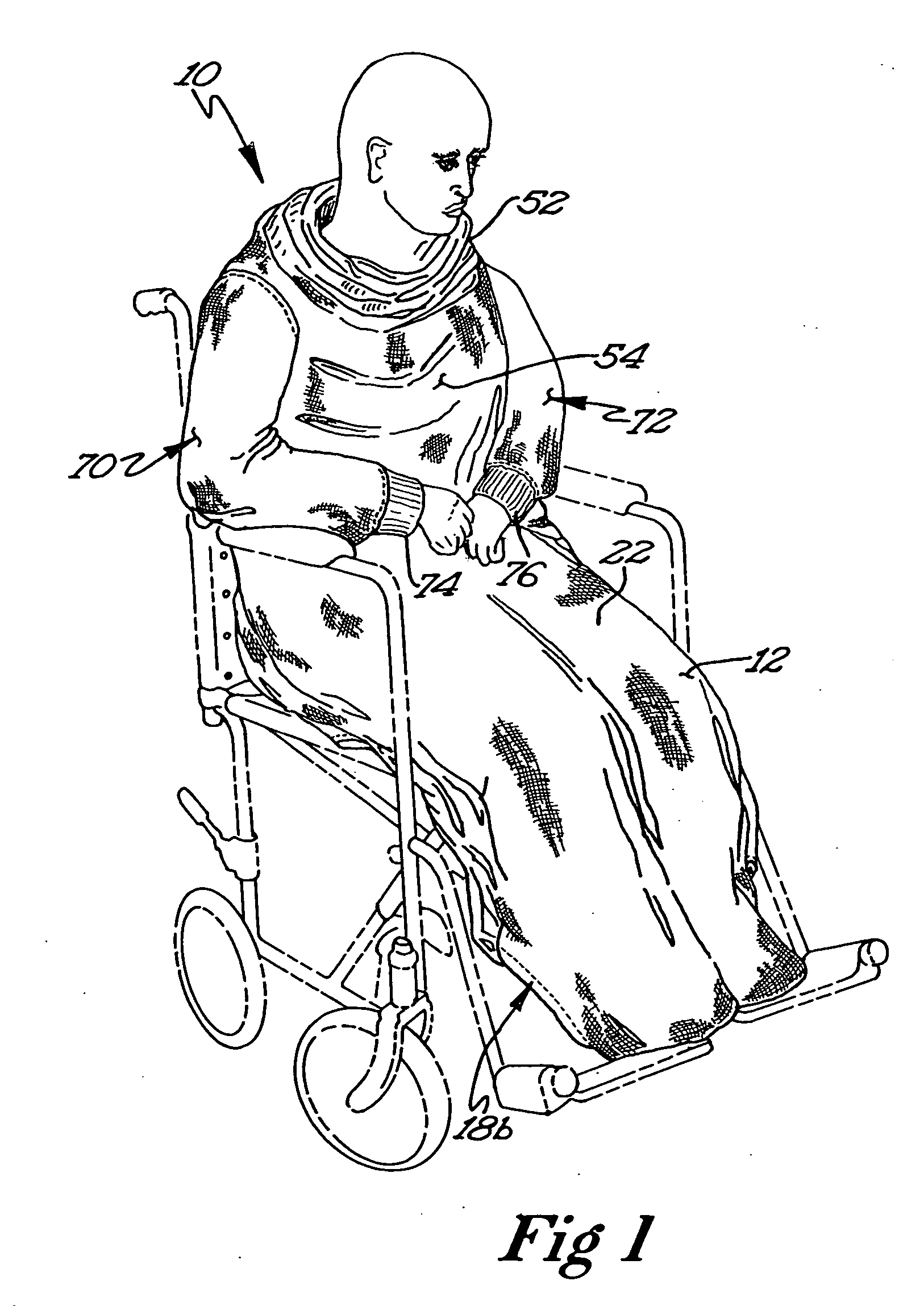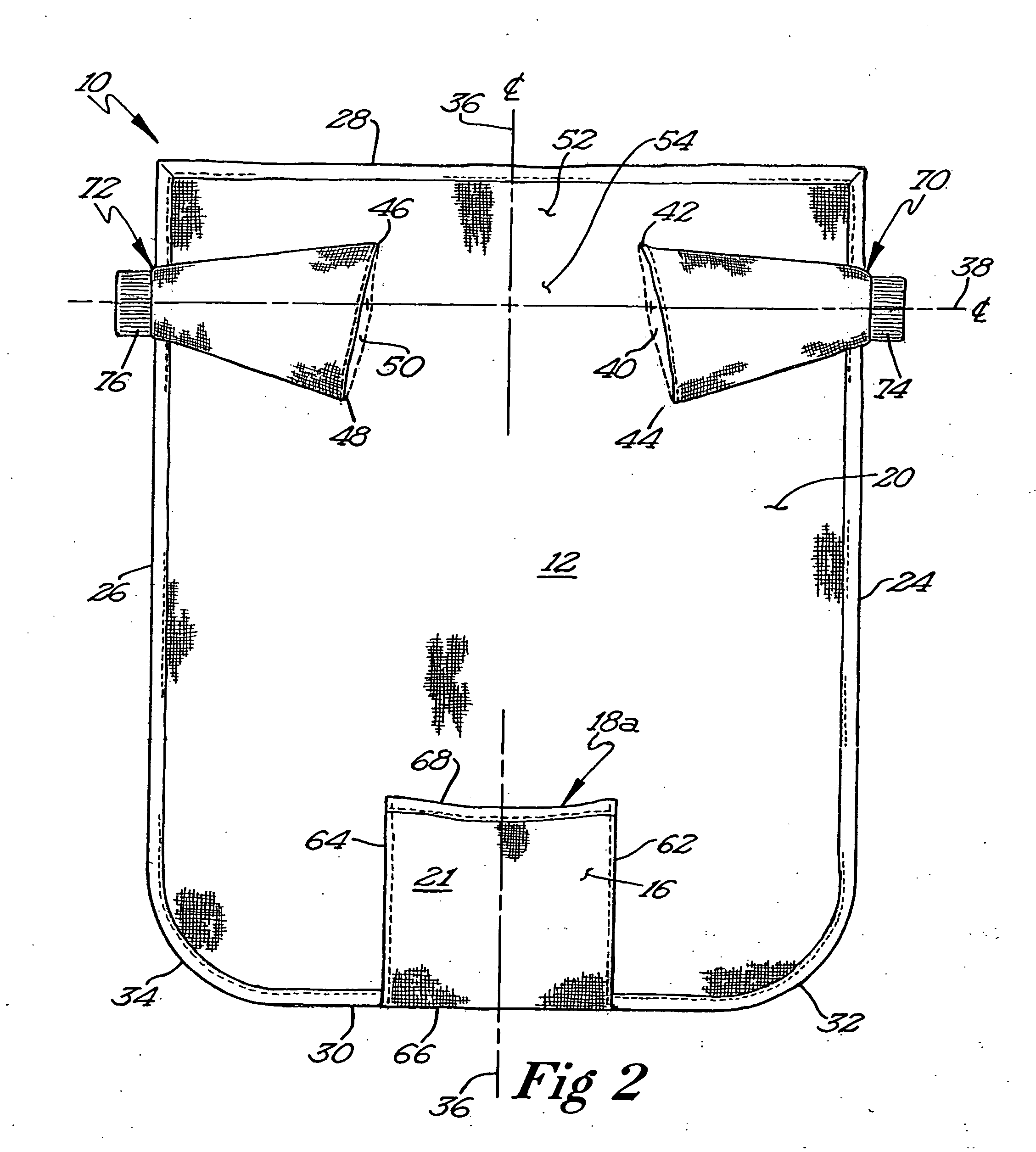Pillow blanket
a pillow and blanket technology, applied in the field of pillows, can solve the problems of inconvenient finding or use, known blanket construction, and inability to meet the needs of wheelchair users, and achieve the effects of convenient arm movement, convenient and neat folding into a pillow, and convenient placemen
- Summary
- Abstract
- Description
- Claims
- Application Information
AI Technical Summary
Benefits of technology
Problems solved by technology
Method used
Image
Examples
Embodiment Construction
[0023] With reference to the drawings, in particular to FIGS. 1 and 2, the pillow blanket 10 of the present invention, as opposed to a mere blanket, is depicted as including a blanket 12, pocket structure 18a, a foot pocket 18b, and a pair of first and second sleeves 70, 72. The pillow blanket invention is used for putting on, taking off, and keeping on without fasteners, a covering from neck to feet of a user in an upright position. In a preferred embodiment of the invention, the pillow blanket 10 is generally rectangular in shape and is made of any suitable material such as fleece.
[0024] The substantially rectangular blanket 12 of the pillow blanket 10 has a first surface 20 and a second surface 22. The blanket 12 is defined by two opposing first and second side edges 24, 26 and two opposing top and bottom edges 28, 30, which are shorter than the two opposing side edges 24, 26. The blanket 12 can be folded into three equal portions; a middle portion 80 and two side portions 82, 8...
PUM
 Login to View More
Login to View More Abstract
Description
Claims
Application Information
 Login to View More
Login to View More - R&D
- Intellectual Property
- Life Sciences
- Materials
- Tech Scout
- Unparalleled Data Quality
- Higher Quality Content
- 60% Fewer Hallucinations
Browse by: Latest US Patents, China's latest patents, Technical Efficacy Thesaurus, Application Domain, Technology Topic, Popular Technical Reports.
© 2025 PatSnap. All rights reserved.Legal|Privacy policy|Modern Slavery Act Transparency Statement|Sitemap|About US| Contact US: help@patsnap.com



